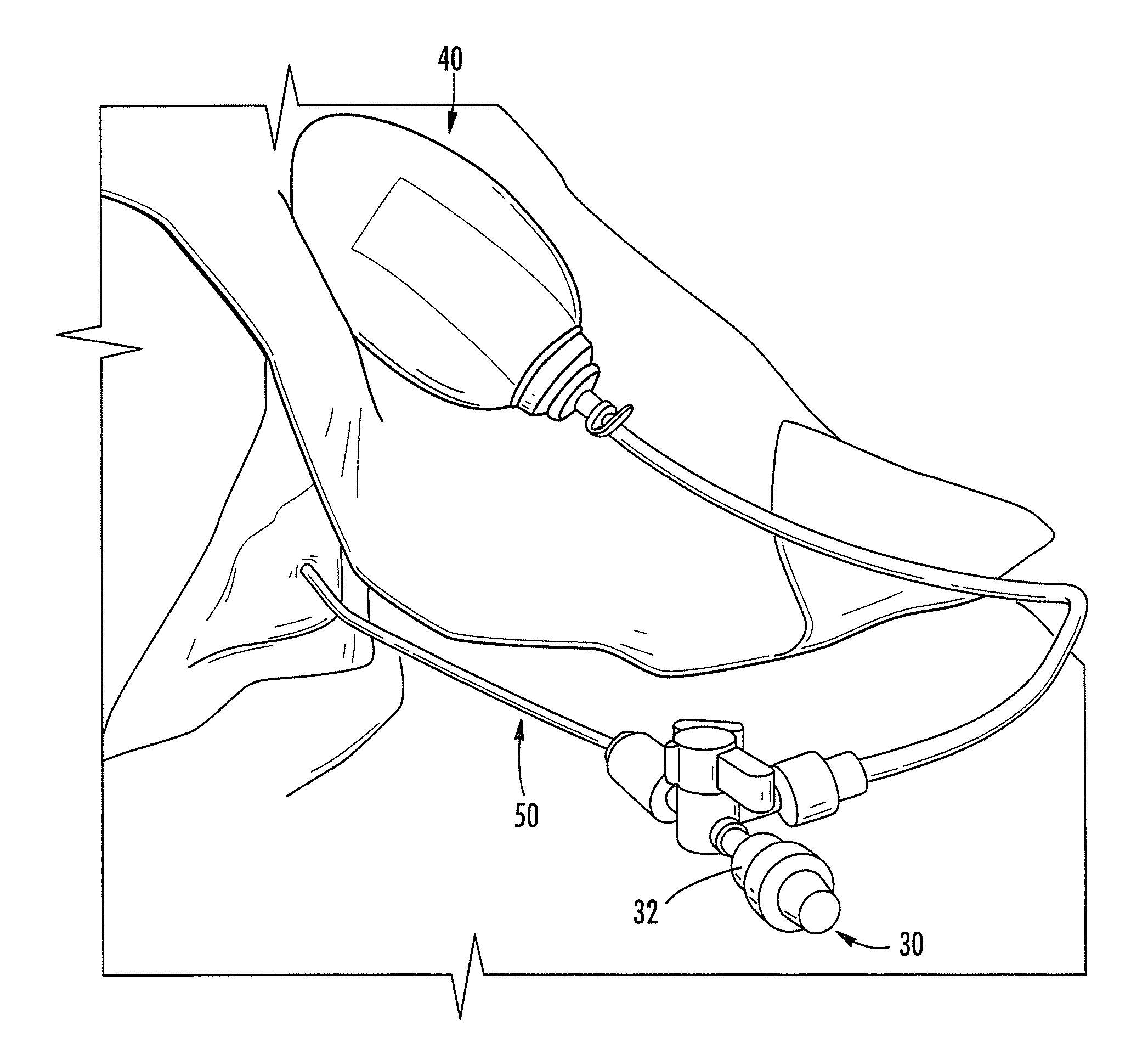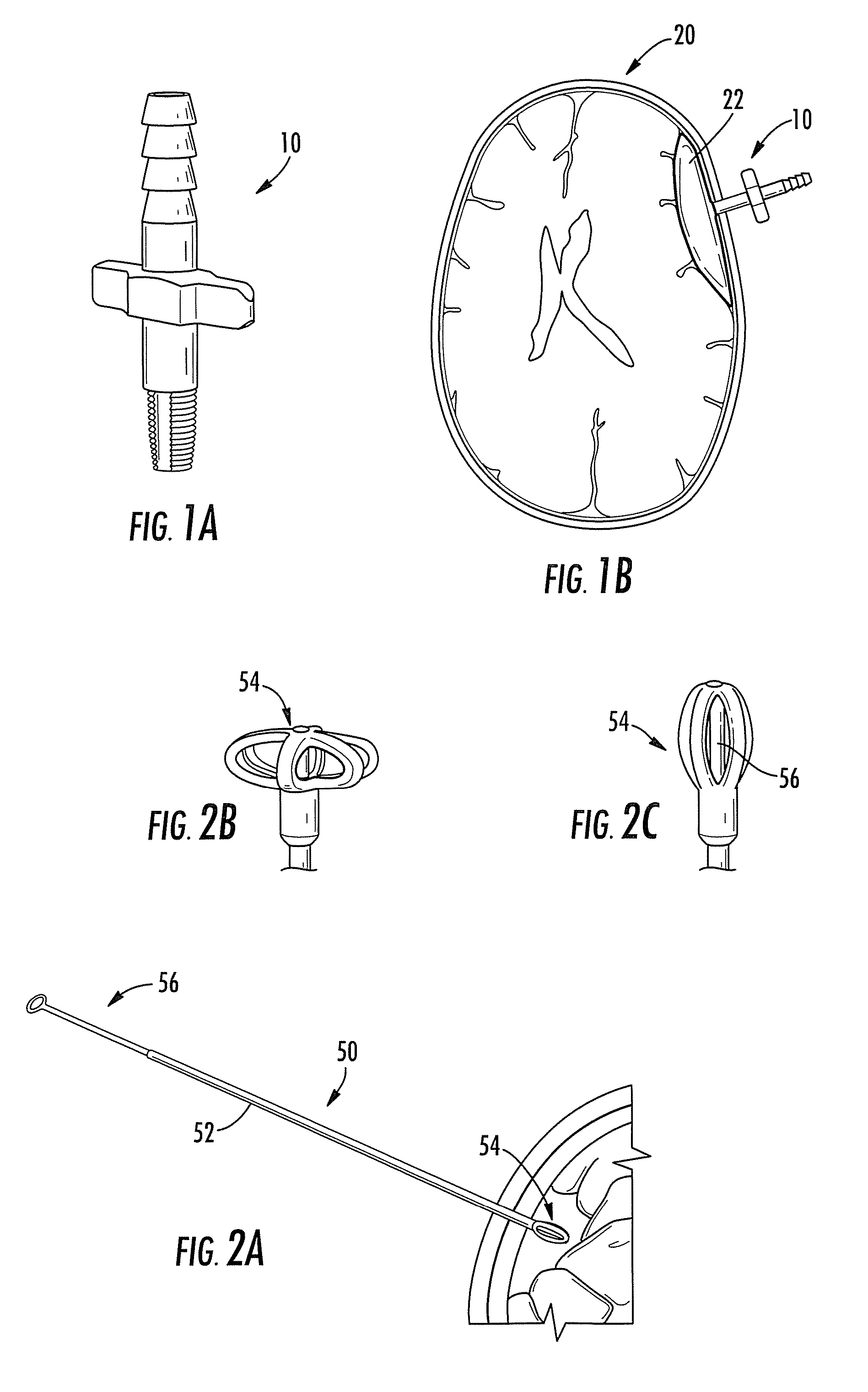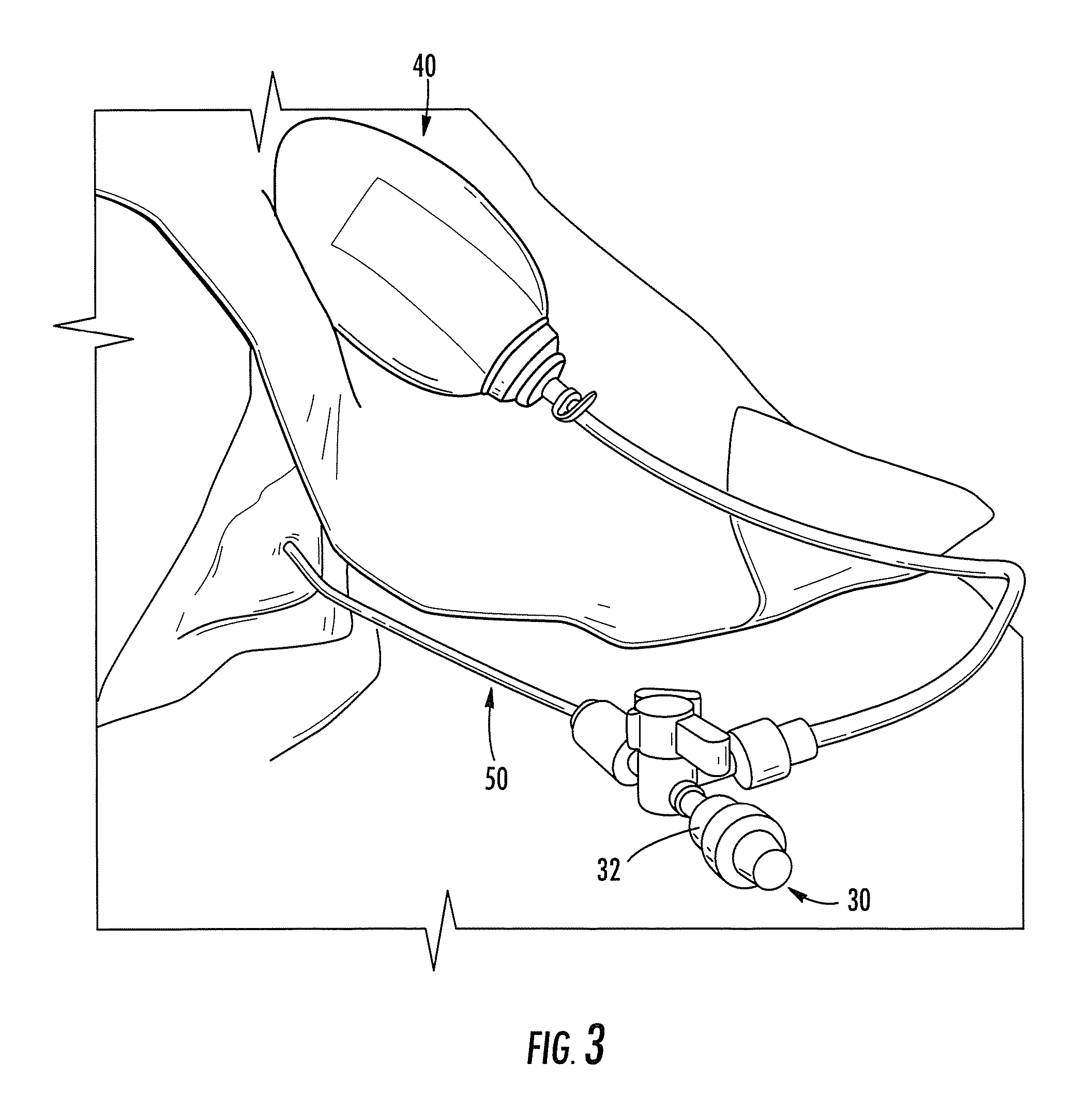Subdural Drainage Catheter with Flow Restoration Mechanism
- Summary
- Abstract
- Description
- Claims
- Application Information
AI Technical Summary
Problems solved by technology
Method used
Image
Examples
example 1
Stylet Housing with Telescoping Body
[0037]As illustrated in FIGS. 5A-5C, a subdural drainage system 100 includes a telescoping housing 110 and a subdural drainage device or catheter 150 in the housing 110. The housing 110 has two telescoping members 112, 114, a channel lock 116, a drain opening 118 and a lower opening 119. A stylet 120 is enclosed by the housing 110 and attached to a handle member 122.
[0038]The lower opening 119 may be configured to be secured on a skull of a subject, or as shown in FIG. 5B, a catheter support 130 having an upper portion 132 connected to the housing lower opening 119 and a lower portion 134 may be used. The catheter support lower portion 134 is configured to be secured in a skull of a subject.
[0039]As illustrated, housing 110 is movable between an extended configuration (FIGS. 5A-5B) and a collapsed configuration (FIG. 5C). In the extended configuration shown in FIGS. 5A-5B, the stylet 120 is withdrawn from at least a portion of the catheter 150. In...
example 2
Stylet Housing formed from Flexible Polymer
[0042]As illustrated in FIGS. 7A-7B, a subdural drainage system 200 includes a housing 210 that encloses a stylet 220. The housing 210 includes a collapsible tubular member 212, a stopper 216, a drain opening 218, a handle 222 and a catheter support 230. The collapsible member 212 is connected to the catheter support 230 at a threaded upper portion 232 of the catheter support 230. A lower portion 234 of the catheter support 230 is configured to be secured in the skull of a subject. A subdural drainage device, such a catheter 250, has a catheter body 252 and a distal end 254 that is positioned in the catheter support 234 such that the catheter distal end 254 extends away from the lower portion 234 of the catheter support 230.
[0043]As illustrated, the collapsible tubular member 212 is movable between an extended configuration (FIG. 7A) in which the stylet 220 is withdrawn from at least a portion of the catheter 250 and a collapsed configurati...
example 3
Housing with Internal Biasing Member
[0045]As illustrated in FIGS. 8A-8B, a subdural drainage system 300 includes a housing 310 and a subdural drainage device or catheter 350 in the housing 310. The catheter includes a body 352 and a deformable distal end 354. The housing 310 encloses a stylet 320. The housing includes a drain opening 318, a lower portion 319, an actuator or button 322 and a biasing member or spring 324. The lower portion 319 may be connected to a connecting member or catheter support (not shown) for providing a connection portal to the skull of a subject or the lower portion 319 may be connected directly to a skull of a subject (e.g., the lower portion 319 may include a threaded portion for connecting to a skull of a subject) to provide fluid communication to the drain opening 318 (which may be in turn connected to a fluid reservoir (not shown)).
[0046]The button 322 is biased by the spring 324 in the extended position as shown in FIG. 8A. The button 322 is connected...
PUM
 Login to View More
Login to View More Abstract
Description
Claims
Application Information
 Login to View More
Login to View More - R&D Engineer
- R&D Manager
- IP Professional
- Industry Leading Data Capabilities
- Powerful AI technology
- Patent DNA Extraction
Browse by: Latest US Patents, China's latest patents, Technical Efficacy Thesaurus, Application Domain, Technology Topic, Popular Technical Reports.
© 2024 PatSnap. All rights reserved.Legal|Privacy policy|Modern Slavery Act Transparency Statement|Sitemap|About US| Contact US: help@patsnap.com










